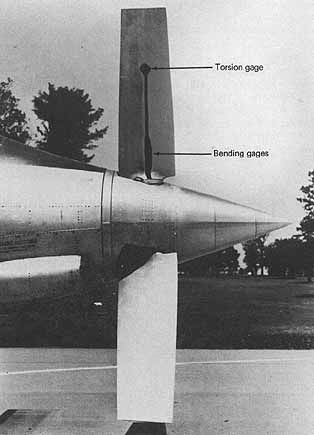|
||||||||||
|
|
||||||||||
|
||||||||||
|
|
||||||||||

The propeller was powered by a turboprop engine, and the vehicle was tested up to Mach 1 during the late 1940s. You can read more about NACA's research program at the NASA History Office, Ch. 4, sec. 7 and Ch. 4, sec. 8.
The reason a supersonic prop looks so different from standard propellers is because of shock waves that form on the propeller blades as the aircraft approaches Mach 1. Even before the plane reaches the speed of sound, portions of the blades do reach or exceed Mach 1 creating "bubbles" of supersonic flow. As we discussed in a previous question on supercritical airfoils, these supersonic regions are accompanied by shock waves. These shock waves not only greatly reduce the efficiency of the propeller, but create tremendous forces that can tear the prop apart. Making the blades shorter and thinner and reducing the blade angle effectively makes the blades supercritical meaning these regions of supersonic flow form at higher speeds than is possible with standard props. By delaying the onset of shock waves and reducing their strength once they do form, the supersonic prop can operate at higher speeds.
So getting back to your question, it is probably NOT possible for a typical propeller-driven plane such as the
P-47, F8F, or Spitfire to become supersonic, even in a dive, because of these shock waves that form when parts of
the plane and propeller exceed Mach 1. The internal structures of these aircraft and the propeller blades were not
designed to withstand the pressure forces generated by these strong shock waves and would likely disintegrate as
they approached Mach 1. This is why the "sound barrier" got its name in the first place. Many early attempts to
break it resulted in the airplane's destruction causing many to believe that a
physical barrier prevented travel faster than the speed of sound. Despite
the promising results of NACA's research, the rapid development of the jet engine doomed the supersonic propeller
and the project was abandoned by 1949. However, rising fuel costs have generated renewed interest in high-speed
propellers since turboprops are more fuel efficient than turbojet and turbofan engines, so we may not have heard
the last of the supersonic propeller.
- answer by Joe Yoon, 17 June 2001
Read More Articles:


|
Aircraft | Design | Ask Us | Shop | Search |

|
|
| About Us | Contact Us | Copyright © 1997-2023 | |||
|
|
|||